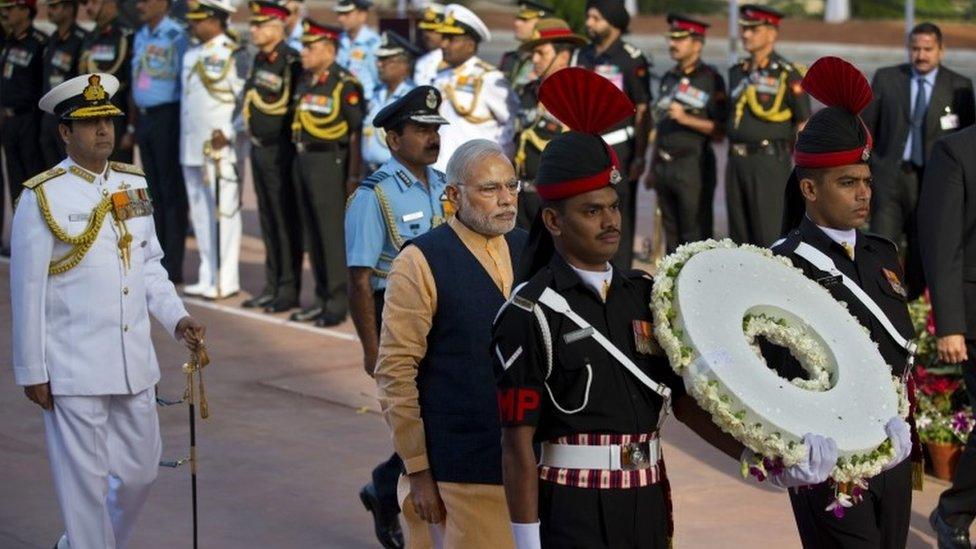Amar Jawan Jyoti: India's iconic flame of martyrs 'merged'
- Published
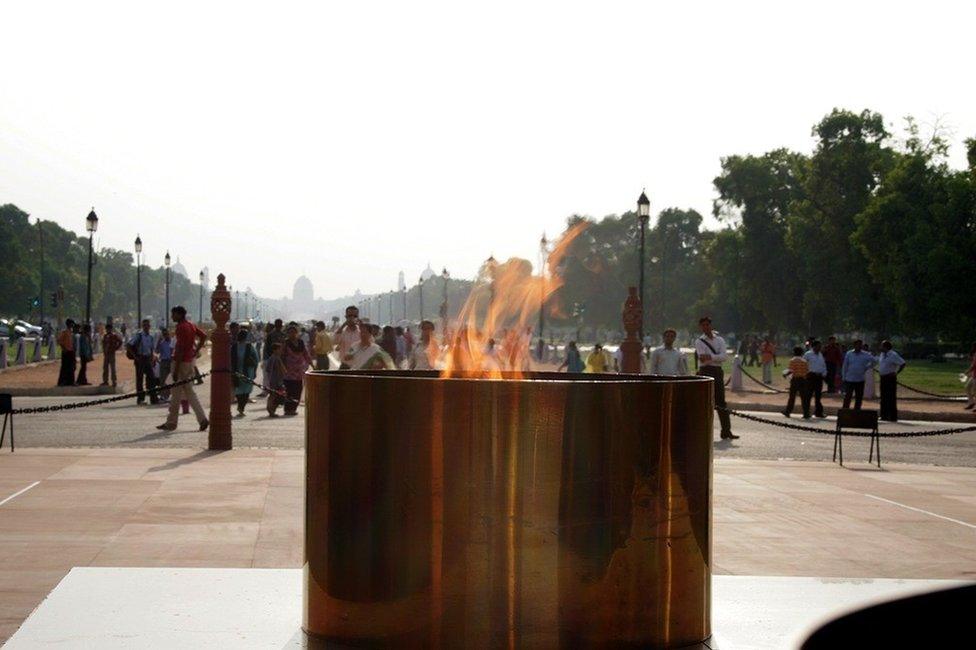
The Amar Jawan Jyoti flame has been burning for more than five decades
The eternal flame at a war memorial in the Indian capital, Delhi, has been put out and merged with a newer flame.
The Amar Jawan Jyoti, which had been burning for more than five decades to honour the martyrs of the armed forces, was merged on Friday with a newer flame located less than 400m away in the newly built National War Memorial.
Both are located in the India Gate complex, which was inaugurated in 1931 in memory of Indian soldiers who died fighting for the British Raj.
The Amar Jawan Jyoti inspired generations of Indians and became an iconic image. Television coverage of India's Republic Day parades always started with visuals of the flame.
The flame at the National War Memorial, which was inaugurated in 2019, would now serve as a memorial for all martyrs of the armed forces. It has names of the soldiers who died in wars and conflicts after India became independent in 1947.
Lieutenant General Vinod Bhatia, who spent many years in Delhi in senior military roles, recounts his memories of the Amar Jawan Jyoti and what it meant to him and millions of Indians. His account is accompanied by pictures by Aditya Kapoor, who was given exclusive access in 2009 to photograph the iconic India Gate complex.
When the Amar Jawan Jyoti was established, I was studying at the National Defence Academy to become an officer. So, I didn't know much about it at the time. But after getting commissioned, I came to Delhi and then I went to see the flame in October 1974.
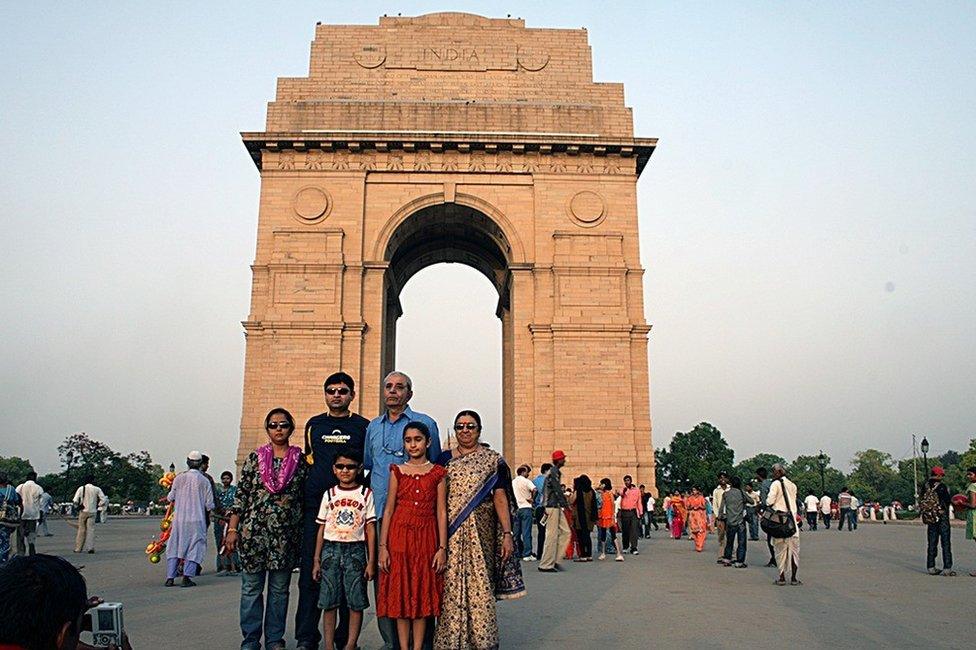
People also visit the India Gate for picnics
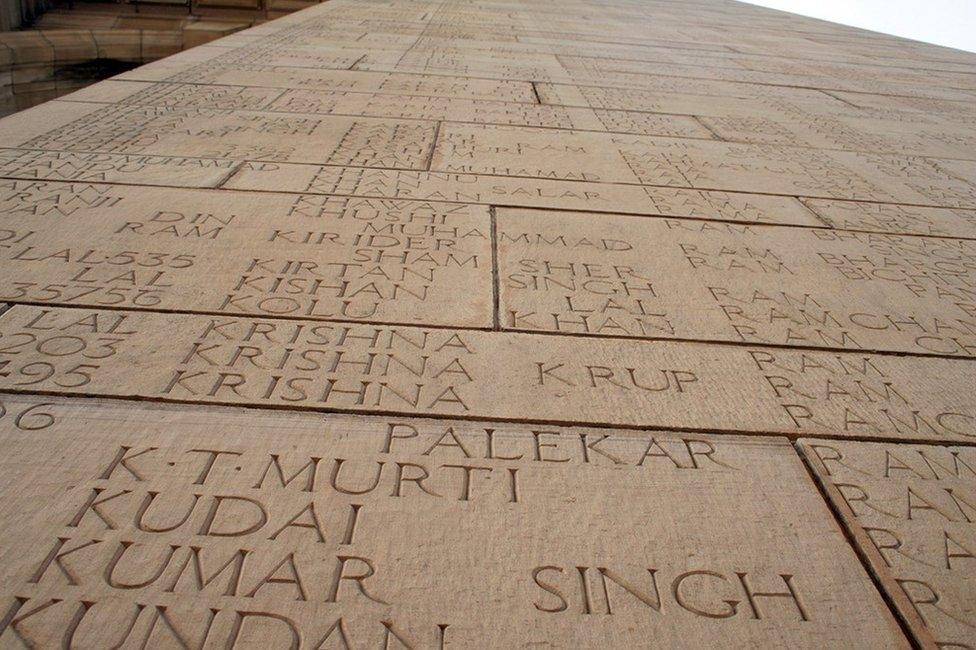
Names of the soldiers who died fighting for the British are inscribed on the iconic India Gate
I was just 20 years old at the time and it was a personal moment for me when I paid my respect to the 1971 martyrs. I knew some of the martyrs who were my seniors from the military academy.
Since then, every time I'd been to India Gate - and we used to live very close to it as a family - my children and I would stand there and we'd observe one minute of silence to pay our respects to the soldiers. Others who saw us doing it would do the same thing.
I used to go there almost daily when I lived in Delhi. Going there gave me a sense of connection with the soldiers. I would say goosebumps is the right word to describe my feeling. I felt pride in the fact that they had sacrificed everything for their nation.
I think my children also felt inspired and that is why they also joined the armed forces. I used to tell them stories of the fallen soldiers.
It's very traumatic losing a colleague. It's never easy. When you lose a soldier, you think for days on end if there was anything you could have done to save his life. That's a question that keeps haunting you over and over again. So, when you stand in front of the flame, you remember all of them.
It's not about a particular soldier who served with you, it's more about respecting [them all]. The armed forces are all about respecting, it's all about respect and regard, nothing else. That is what we did in front of the flame.
But the decision to move the flame to the National War Memorial was needed. It's an excellent decision because the National War Memorial [unlike India Gate] commemorates the soldiers who fought for India after the country became independent in 1947.
More than 25,000 soldiers have died in wars and conflicts since then. We pay homage to them but also honour the serving soldiers and the veterans out there.
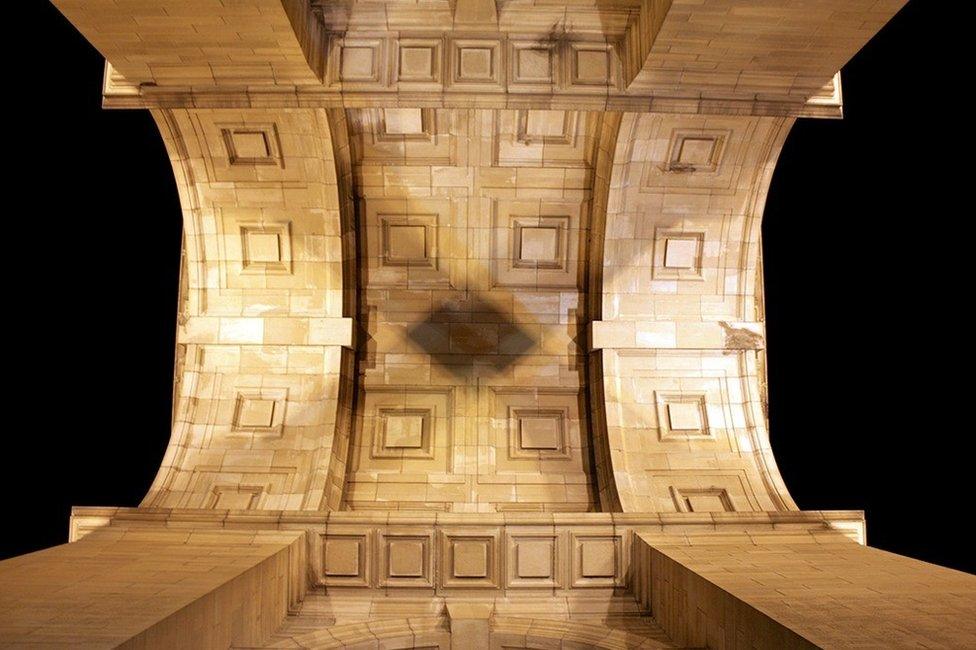
A reflection of the flame on the India Gate arches
With the merging of the flame, now I'm paying respect to the Indian soldiers who fought for India. It's not that I don't respect the soldiers who fought for the British Empire. Their legacy also continues. But you can't have two separate flames.
The war memorial is a quieter, sober and sacred place which was missing at the India Gate.
At the Jyoti, some civilians would watch us and would stand properly with their heads down to pay their respect. But there were others who didn't bother. So it used be a mix. But when I go to the National War Memorial now, I see hordes of civilians who come there to honour the martyrs.
That's the difference I have seen. [India Gate] was also a spot for fun basically. It is known for evening picnics, boating and things like that. It's a place where you go for a day out.
Having said that, India Gate will also continue to inspire people.
My father first took me there for the first time in 1964 to watch the Republic Day parade. Millions are used to watching the prime minister of India pay homage to the martyrs at the Amar Jawan Jyoti every year on TV. But now the new memorial has become a place to honour the forces every day in peace, and it's not about just few particular days in a year.
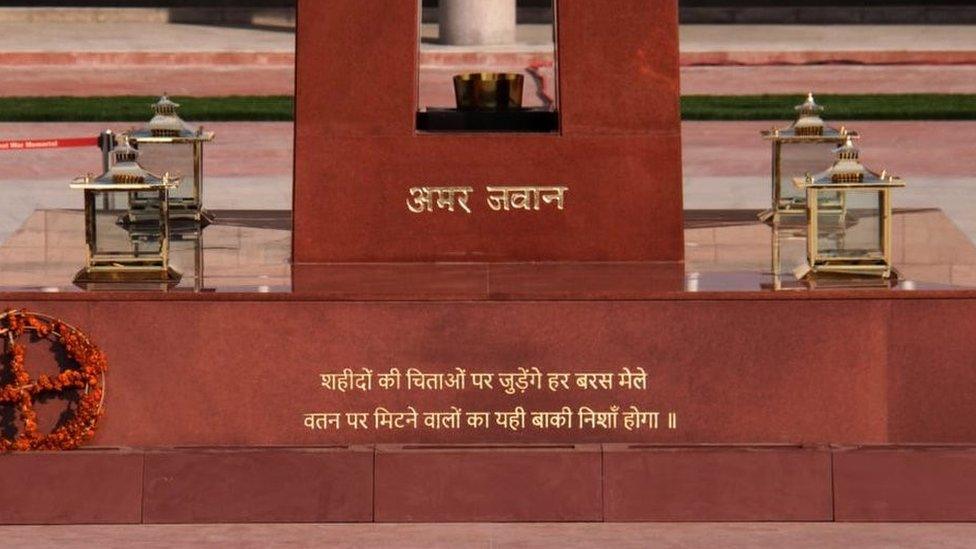
The newer flame burns in the National War Memorial
I also take my grandchildren there. I visit the memorial on death anniversaries of my fallen colleagues. Their families also come. Every day of the year, one next of kin of a fallen soldier is honoured at the memorial. One of the officers of their unit comes there and spends time with the next of kin and supports them. That is something which didn't happen at India Gate.
India Gate is definitely a part of our heritage but that doesn't mean we keep doing things the way it was done earlier.
- Published2 July 2015

- Published23 March 2015
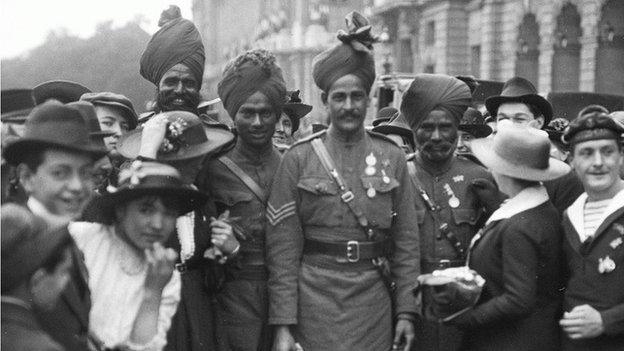
- Published10 March 2015
